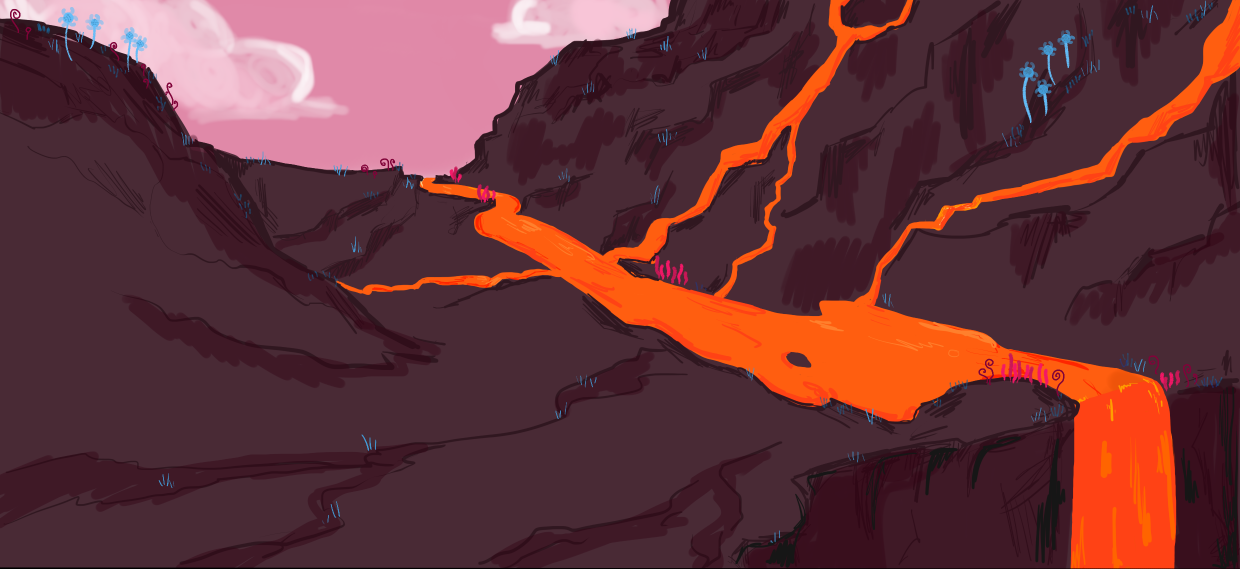Helsaurus
Helsauruses are a species of giant reptilian megafauna found all over Hell. They are one of the most famous creatures on the planet, and the many mining companies find the reptiles difficult to deal with as they constantly disrupt their processes.
Basic Information
Anatomy
Helsauruses have a flat, ankylosaur-like body, with wide legs, a wide torso, flat head, long tail, and spiky bone armour on their backs. Their heads are a square shape, with wide beaks made from bone and is a dark grey colour. Their eyes are small and yellow, with grey bone armour covering their eyelids. The backs of their heads also possess a crown shaped bone armour.
On the creature's backs is more of the bone armour that is present across the animals. This armour changes depending on the creature, spikes, arches, and flat areas are all present on the animals. Their legs are wide and flat, with seven toes on each of their four feet. Their tails are long and flat, ending in a large bony club with nodes and spikes on them.
Sexual Dimorphism
The only major difference between male and female helsauruses is the size. Females are 20% bigger than males, with a larger club and a longer tail. Tails on females also have several rows of small bumps.Genetics and Reproduction
Helsauruses give birth in dens in the sides of mountains and volcanoes. Females lay 6 eggs, which takes about a year to hatch. These eggs are placed in a separate hole in the ground, which is created by the reptiles bludgeoning the ground.
Ecology and Habitats
There isn't much variety in environments on Hell, so helsauruses are accustomed to the usual volcanoes, fire and boiling rocks. They live at the bases of mountains and volcanoes, and their migration round the world has caused the formation of large pathways on average about 10 metres wide.
Dietary Needs and Habits
Helsauruses are volcanivores, and consume volcanic rocks to survive. Their species has decimated entire volcanoes, and is one of the many volcanivores on the planet. They have also been seen to drink magma, which proves that their stomachs must be incredibly durable.
Geographic Distribution




Comments